Overview
From the rule book:
“Life isn’t easy in the enchanted forest. Elves and gnomes each have their own network of hidden paths. They don’t want to be disturbed and will move into their houses only once they’re protected from outsiders. Will you find your way or be lost in the forest?”
This synopsis of Fairy Trails just about sums up the rulebook experience for the game; checking in at a svelte 6 pages in giant print with maybe 1 or 2 paragraphs per page, it is a very quick read. If you’ve ever played Uwe Rosenberg’s Patchwork and thought that it was a remarkably easy game to learn, then Fairy Trails is going to strike you as being even easier. But don’t let that fool you. For just a few pages of very simple rules, there’s a surprising amount of depth inside of this tiny square box.
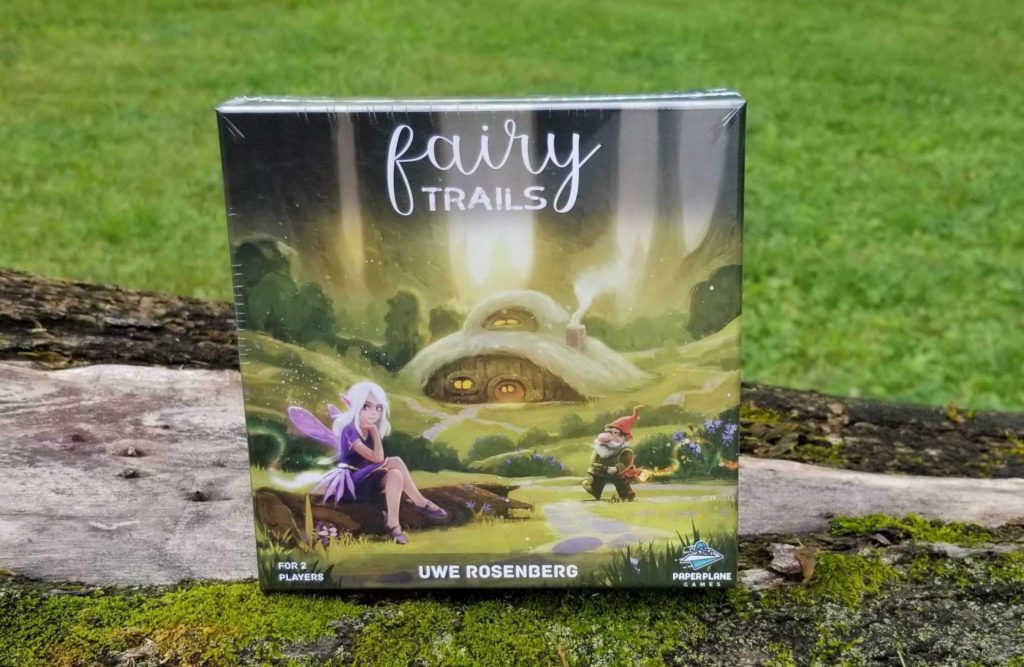
How to Play
In the game of Fairy Trails each player is racing to complete paths in order to place all of the stones from their supply before their opponent can do so. One player plays as the elves, one as the gnomes. At its heart, Fairy Trails is a tile laying game although it uses small, square cards instead of tiles. At the beginning of the game, a starting card is placed between the two players and each is dealt 2 cards apiece. Then they take turns playing a card from their hand, connecting it to previously placed cards in an effort to create closed networks of roads. If they manage to close a network then every house that is on that network will receive a stone of the appropriate color — purple for the elves and yellow for the gnomes. After they place their card, they draw a new one to replace it.
The first player to place their final stone wins the game.

And that’s all there is to it. Sure, there are a few tiny little details I left out, but that’s the gist of how the game is played. To better illustrate things, I’m just going to go through a turn of play so that you can see the game in action.
Blazing Trails
In this image, the game is about 5 rounds in. The starting card has been outlined in red.
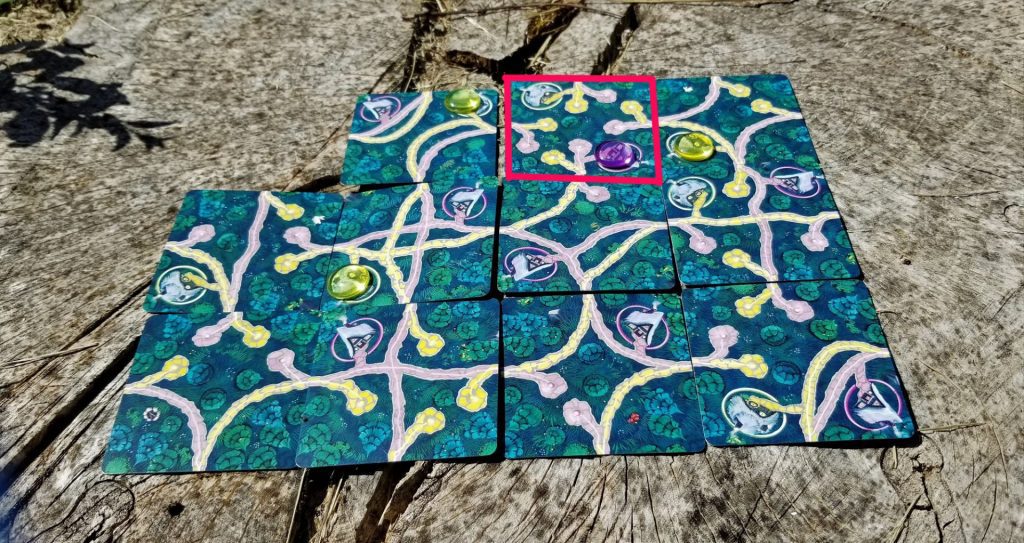
I am holding these 2 cards in hand:

Fairy Trails has been designed so that any card can be placed orthogonally adjacent to any other card. These 2 cards can literally be placed anywhere… and this is where the game gets sneakily deep (not to mention outright cutthroat). There are a lot of things to consider (I am the yellow player in these images):
Do I press my luck and try to extend one of my own networks so that when I finally do close it, I’ll get to put out a lot of stones?
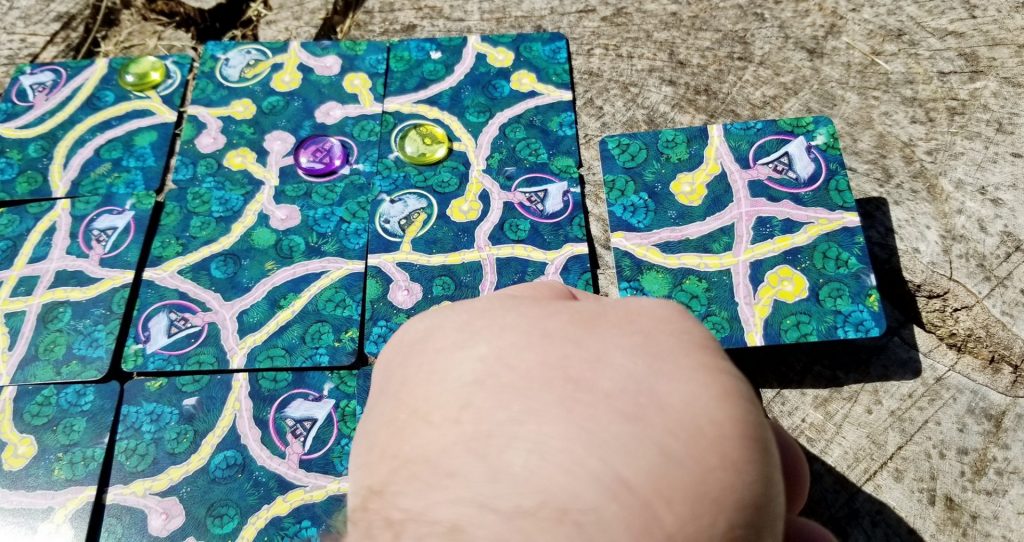
Do I go for a quick and easy point by closing off a small route?

Do I try to extend an opponent’s route to hinder them from scoring it?
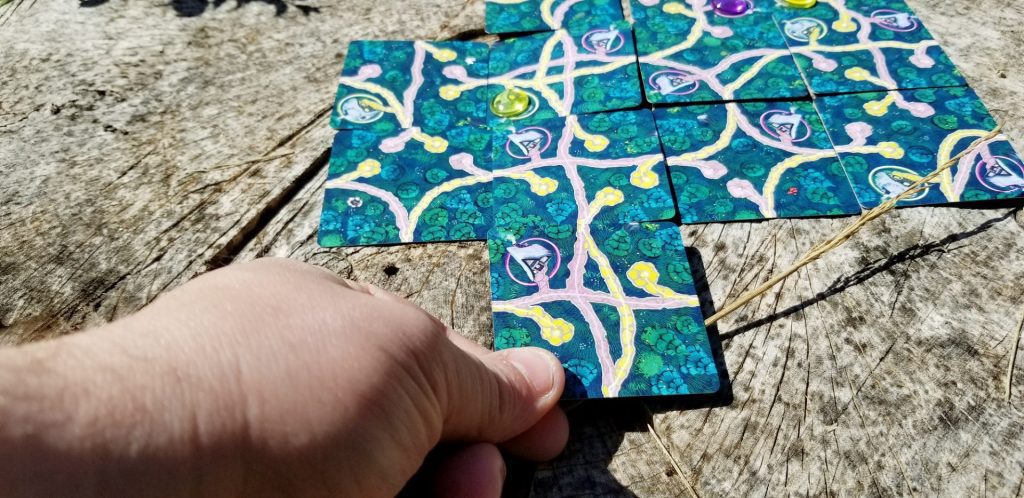
Ideally, the best option would be a way to combine all of these. In a game like Carcassonne, your choices are more constricted. Roads must touch roads, fields must touch fields, etc. In Fairy Trails, though, since everything connects to everything else, your options are much more open-ended. This open-endedness is simultaneously one of Fairy Trails’s greatest strengths and one of its greatest weaknesses. There are a lot of agonizing decisions to make (which is awesome) that can sometimes take a lot of time (which is not so awesome).
Thoughts
Firstly, let’s make this abundantly clear: I love Uwe Rosenberg. He is one of my favorite designers (if not the favorite). So, it should come as no shock that I really like this game.
There’s a lot to like.
Take how small and compact the box is, for starters. I’ve railed against boxes that waste a lot of space in the past (I’m looking at you Shadows of Macao) and it’s nice to see Paperplane Games taking the footprint of the game into consideration with the packaging design. There’s even a vacuum formed tray included with two little recesses: one to hold the cards in place and another that holds the little baggie that the stones are stored inside of.

The artwork on the box is lovely too and I wish that it translated to the cards themselves. The roads and houses pictured on the cards look nice, but as the game grows, the interconnectedness of everything can make it very difficult to distinguish what’s connected to what else and where the different roads begin and end. As if the decision of what’s the best spot to place your card weren’t difficult enough, simply trying to figure out where everything begins and ends further complicates the decision. This, of course, means that turns have a tendency to take more time than you’d like them to. It’s not a huge deal but, suffice to say, the 20 minute game time printed on the side of the box would only apply to a game where the two players are just playing cards without any care as to where they are being played. In my experience, 20 minutes per player is more accurate.
My only other negative that I have about Fairy Trails is Paperplane Games’s decision to use a deck of tiny square cards as opposed to a drawstring bag full of tiles. You’re told to shuffle the cards during setup, but it’s next to impossible. The smallness of the cards coupled with their shape doesn’t leave room for any bow in the cards, so a riffle shuffle is virtually useless. The only way to effectively shuffle them is to mix them all up in a giant pile like a child and then restack them. Note to publishers: if your game is effectively a tile laying game then actually using tiles is always your best option. At least, that’s my opinion.

Overall, though, as I mentioned before, I really enjoy this game. I personally like the agonizing decision making. I like the challenge of trying to figure out how to get my own stones played out while trying to block my opponent at the same time. It’s the same way I play Carcassonne: ruthlessly and efficiently.
For instance, there was one game of Fairy Trails where I was fighting a desperate effort to keep my opponent from closing off their sizable network of roads by adding forks to it whenever the opportunity arose. As hard as I tried to stave it off, though, they kept closing off the branches I was creating and were down to just another one or two left which would have resulted in them placing enough stones to win the game. That’s when I hit upon the idea of using the boundaries of the physical playing area as a gambit… and it paid off. I was eventually able to extend their network to the edge of the table and I knew that unless they were Jean Grey with the power to levitate objects using the power of their mind, there was no possible way they would ever be able to finish it.
Yes, Fairy Trails is that kind of game. Things may look idyllic and sweet on the cover, but there’s a lot of conflict in this box. I haven’t played a Rosenberg with this much aggression since the last time I got Babel to the table. If aggressive play isn’t your cup of morning dew, then Fairy Trails may not be the best fit for you. But if you’re not turned off by in-your-face strategic play, Fairy Trails is well worth it.


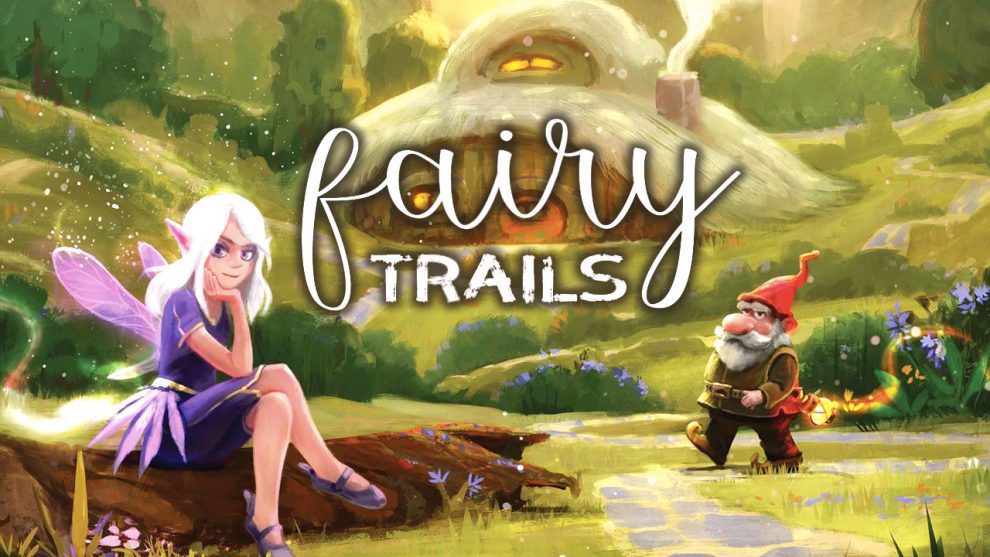

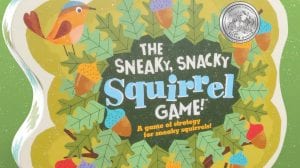

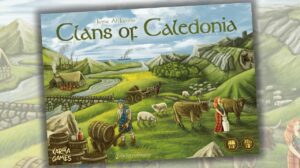





The cards can only really be a product cost savings thing. That is all I can think of.
And I agree. It makes no sense to make those cards when a nice, hefty tile would be far superior. Great review! Thanks.